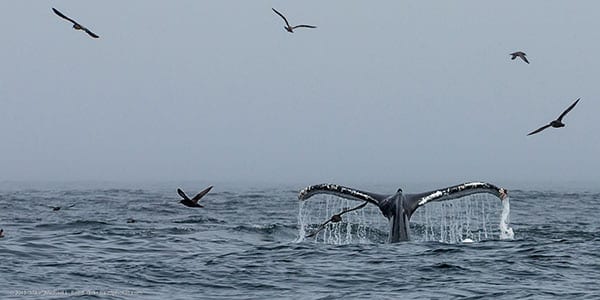May 15, 2014
Understanding animal propulsion

A team of students working with Dr. John H. Costello, professor of biology, and Dr. Sean P. Colin ’93, associate professor of environmental science at Roger Williams University in Bristol, R.I., analyzed videos from YouTube and other online databases to define bending patterns for animal propulsion that are consistent across species — for fruit flies, birds, and humpback whales.
In a paper published in the journal Nature Communications, Costello and the students described how the fins and wings of animals swimming underwater and flying through the air bent the same way, an example of convergent evolution. The finding has important implications for vehicle design, because animals are hundreds of times more efficient than manmade vehicles when it comes to cost per transport, a measurement akin to miles per gallon. For more: prov.ly/animalpropulsion





